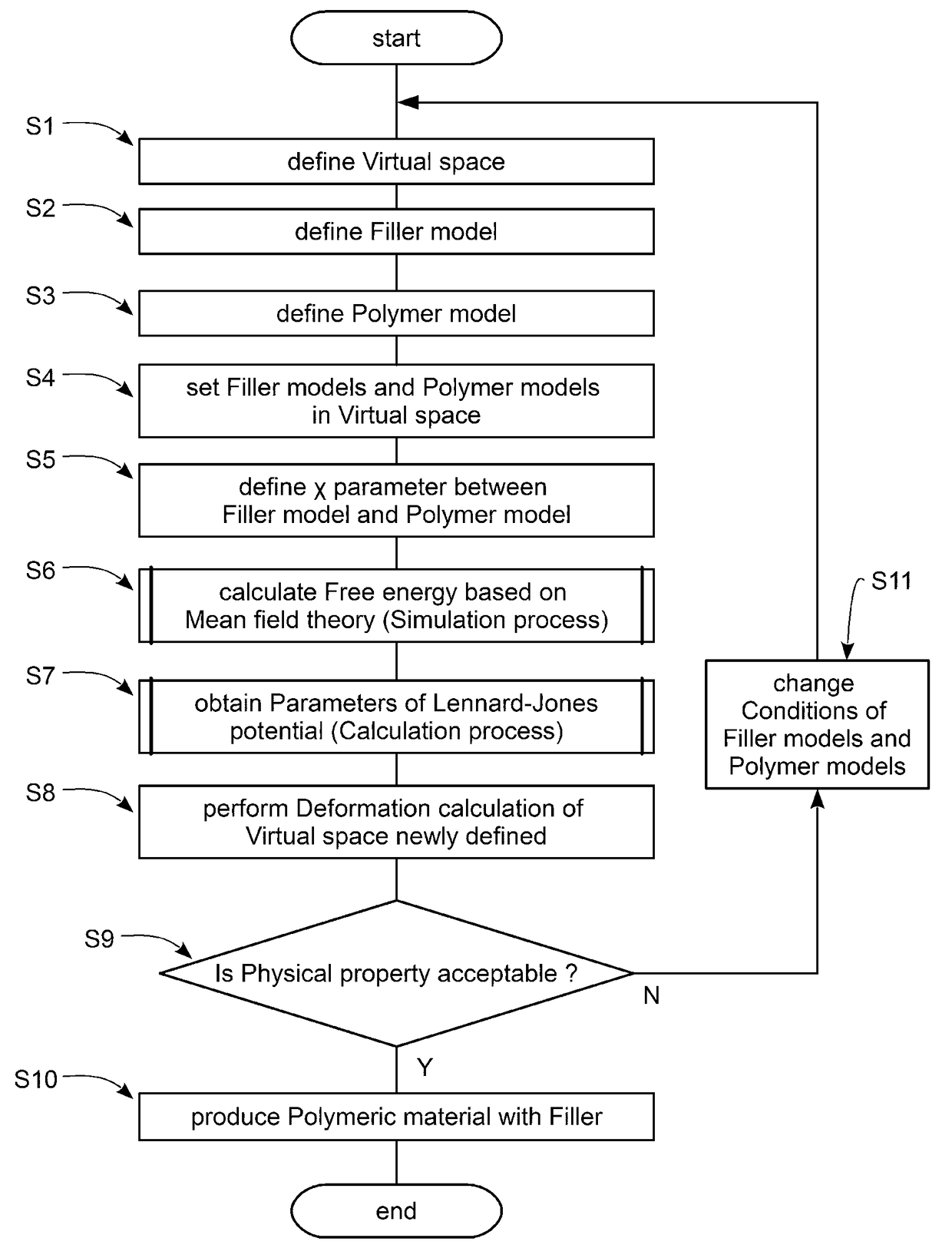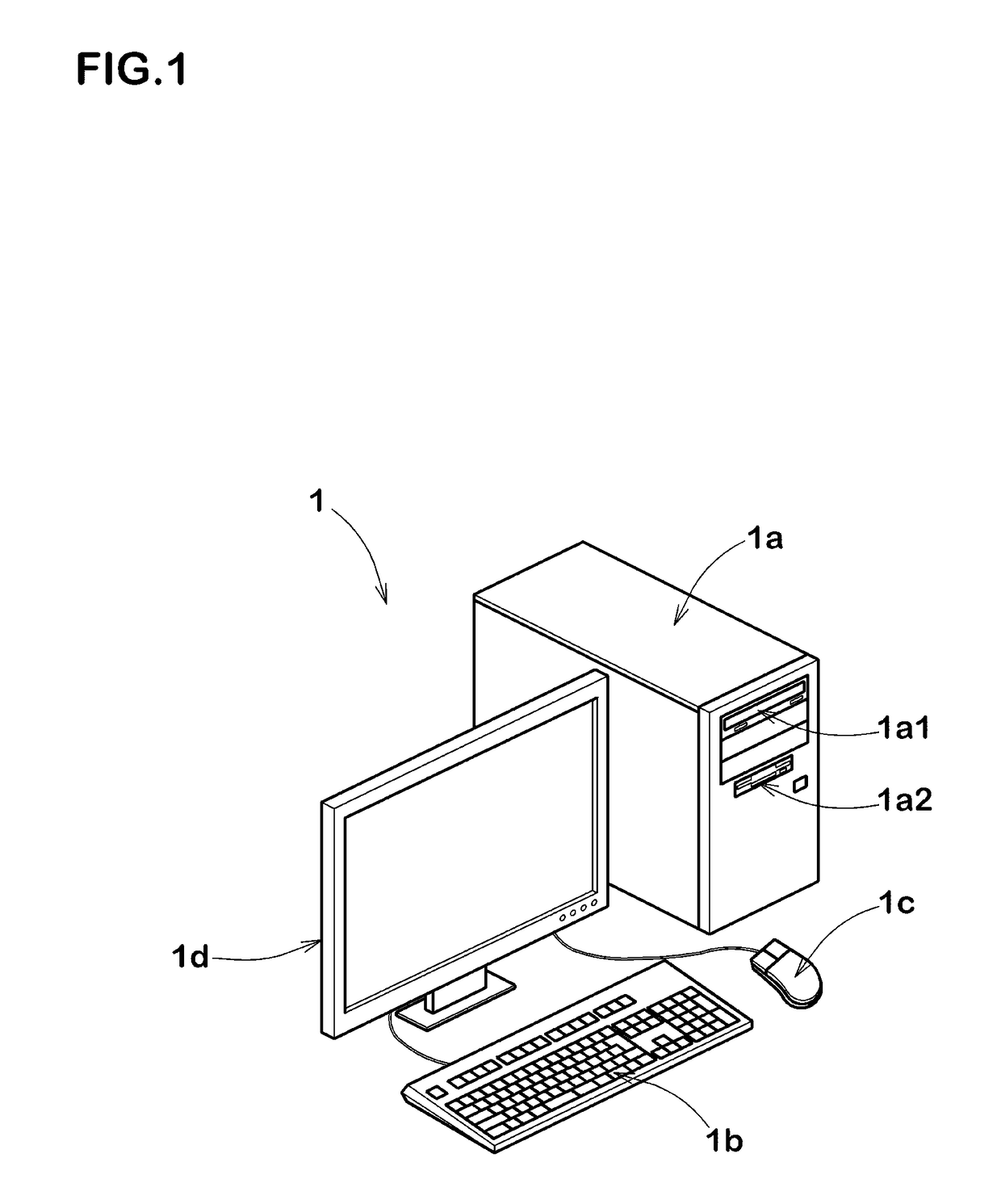Method for calculating interaction potential between filler particles in polymeric material
a polymer material and interaction potential technology, applied in the field of calculating the interaction potential between filler particles in polymeric materials, can solve the problem of difficulty in high-accuracy simulation, and achieve the effect of high accuracy
- Summary
- Abstract
- Description
- Claims
- Application Information
AI Technical Summary
Benefits of technology
Problems solved by technology
Method used
Image
Examples
Embodiment Construction
[0035]Embodiments of the present invention will now be described in detail in conjunction with the accompanying drawings.
[0036]The method for calculating an interaction potential between filler particles in a polymeric material according to the present invention (abbreviated to “calculating method”) is carried out by the use of a computer 1.
[0037]Here, the filler may be any kind of filler including carbon black, silica, alumina and the like. The polymeric material may be any kind of polymer including rubber, elastomer, resin and the like.
[0038]As shown in FIG. 1 for example, the computer 1 implementing the calculating method comprises a main body 1a, a keyboard 1b, a mouse 1c and a display 1d. The main body 1a comprises an arithmetic processing unit (CPU), memory, storage devices such as magnetic disk, disk drives 1a1 and 1a2 and the like. In the storage device, programs / software for carrying out the calculating method is stored.
[0039]FIG. 2 shows a flow chart of the calculating met...
PUM
 Login to View More
Login to View More Abstract
Description
Claims
Application Information
 Login to View More
Login to View More - R&D
- Intellectual Property
- Life Sciences
- Materials
- Tech Scout
- Unparalleled Data Quality
- Higher Quality Content
- 60% Fewer Hallucinations
Browse by: Latest US Patents, China's latest patents, Technical Efficacy Thesaurus, Application Domain, Technology Topic, Popular Technical Reports.
© 2025 PatSnap. All rights reserved.Legal|Privacy policy|Modern Slavery Act Transparency Statement|Sitemap|About US| Contact US: help@patsnap.com



